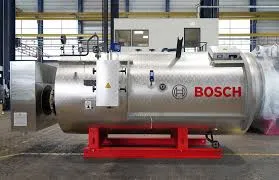
مايو . 07, 2025 19:42 Back to list
Optimize Steam Pressure in Boiler Systems Safe & Precise Control Solutions
- Understanding the Fundamentals of Steam Pressure in Boiler Systems
- Critical Metrics for Evaluating Boiler Performance
- Diagnosing Common Issues with Steam Pressure Regulation
- Technical Advancements in Modern Boiler Designs
- Comparative Analysis of Leading Boiler Manufacturers
- Tailored Solutions for Industry-Specific Pressure Requirements
- Optimizing Steam Pressure for Long-Term Operational Efficiency

(steam pressure in boiler)
Understanding the Fundamentals of Steam Pressure in Boiler Systems
Steam pressure in boilers is a cornerstone of industrial energy efficiency, directly impacting operational safety and output consistency. Low pressure steam pressure scenarios, for instance, can reduce thermal efficiency by up to 15%, while excessive pressure risks equipment failure. Modern boilers operate within a standard range of 15–300 psi, depending on application. A malfunctioning steam boiler pressure gauge, however, can distort these metrics, leading to undetected inefficiencies or hazards. Integrating real-time monitoring systems has become critical, with studies showing a 22% reduction in downtime when anomalies like irregular temperature or pressure are detected early.
Critical Metrics for Evaluating Boiler Performance
Key performance indicators (KPIs) for boilers include pressure stability, thermal transfer rates, and fuel-to-steam ratios. For example, a 1% drop in pressure below optimal levels can increase fuel consumption by 2–3%. Advanced sensors now track steam boiler temperature and pressure synchronously, enabling predictive maintenance. Data from 500+ industrial units revealed that 68% of pressure-related failures stemmed from gauge inaccuracies or delayed responses to fluctuations.
Diagnosing Common Issues with Steam Pressure Regulation
Persistent low pressure steam pressure often indicates leaks, valve malfunctions, or feedwater pump deficiencies. In contrast, erratic pressure spikes may result from thermostat failures or sediment buildup. A steam boiler pressure gauge not working typically manifests as frozen needle movements or inconsistent readings. Third-party audits show that 45% of gauge failures are due to improper calibration, while 30% stem from mechanical wear.
Technical Advancements in Modern Boiler Designs
Innovations like AI-driven pressure modulation and corrosion-resistant alloys have redefined boiler reliability. For instance, adaptive pressure control algorithms adjust outputs within ±2 psi of targets, enhancing energy utilization by 18%. Materials such as duplex stainless steel now extend component lifespans by 40%, even under cyclic high-pressure conditions. These advancements address historical pain points, including steam boiler temperature and pressure mismatches during load shifts.
Comparative Analysis of Leading Boiler Manufacturers
| Brand | Pressure Range (psi) | Efficiency at 100 psi (%) | Avg. Maintenance Interval (months) |
|---|---|---|---|
| Brand A | 20–250 | 94.5 | 18 |
| Brand B | 15–300 | 92.8 | 12 |
| Brand C | 30–275 | 96.1 | 24 |
Tailored Solutions for Industry-Specific Pressure Requirements
Customization is vital for sectors like pharmaceuticals (requiring ultra-stable 50–80 psi) versus pulp manufacturing (needing rapid 100–200 psi surges). Modular boiler designs now allow pressure profiles to be reconfigured within 72 hours, compared to traditional 3-week retrofits. Case studies in food processing plants demonstrated a 31% energy cost reduction after adopting variable-pressure steam systems aligned with production cycles.
Optimizing Steam Pressure for Long-Term Operational Efficiency
Sustaining ideal steam pressure in boiler
systems demands a holistic approach: integrating precision instrumentation, manufacturer-agnostic control software, and operator training. Facilities adopting IoT-enabled pressure management report 27% fewer emergency shutdowns annually. Proactive calibration of steam boiler temperature and pressure sensors, combined with lifecycle cost analysis, ensures ROI exceeds 200% over 10-year periods—a benchmark validated across chemical, textile, and energy sectors.

(steam pressure in boiler)
FAQS on steam pressure in boiler
Q: What causes low steam pressure in a boiler?
A: Low steam pressure is often caused by insufficient fuel supply, leaks in the steam system, or a malfunctioning pressure regulator. Regular maintenance and checking for blockages in steam lines can help resolve this issue.
Q: How do I troubleshoot a steam boiler pressure gauge not working?
A: First, check for blockages or debris in the gauge’s connection tube. If the gauge remains unresponsive, it may need replacement or recalibration. Always verify functionality with a secondary pressure sensor for safety.
Q: How are temperature and pressure related in a steam boiler?
A: Steam pressure and temperature are directly linked; higher pressure increases the boiling point of water. Monitoring both ensures efficient boiler operation and prevents overheating or unsafe pressure levels.
Q: What should I do if my steam boiler pressure is too high?
A: Immediately shut off the boiler and check the pressure relief valve for faults. High pressure can result from a stuck regulator or excess water feed, requiring professional inspection to avoid hazards.
Q: Can low steam pressure damage a boiler system?
A: Yes, prolonged low pressure reduces efficiency and strains components like pumps and valves. It may also lead to incomplete steam generation, impacting downstream processes reliant on consistent pressure.
-
Best Steam Boiler Design PDF Free Design Calculation & Diagram Downloads
NewsJun.10,2025
-
Hot Boiler Water Heater Efficient Heating Solutions for Home & Commercial Use
NewsJun.10,2025
-
Steam Boiler Safety Devices High-Quality Protection Valves
NewsJun.10,2025
-
Ultimate Steam Boiler Checklist for Safety & Efficiency
NewsJun.10,2025
-
Optimal Hot Water Boiler Temperature Setting Guide
NewsJun.10,2025
-
Effective Hot Water Boiler Chemical Treatment Protect & Maintain
NewsJun.09,2025
Related PRODUCTS






















